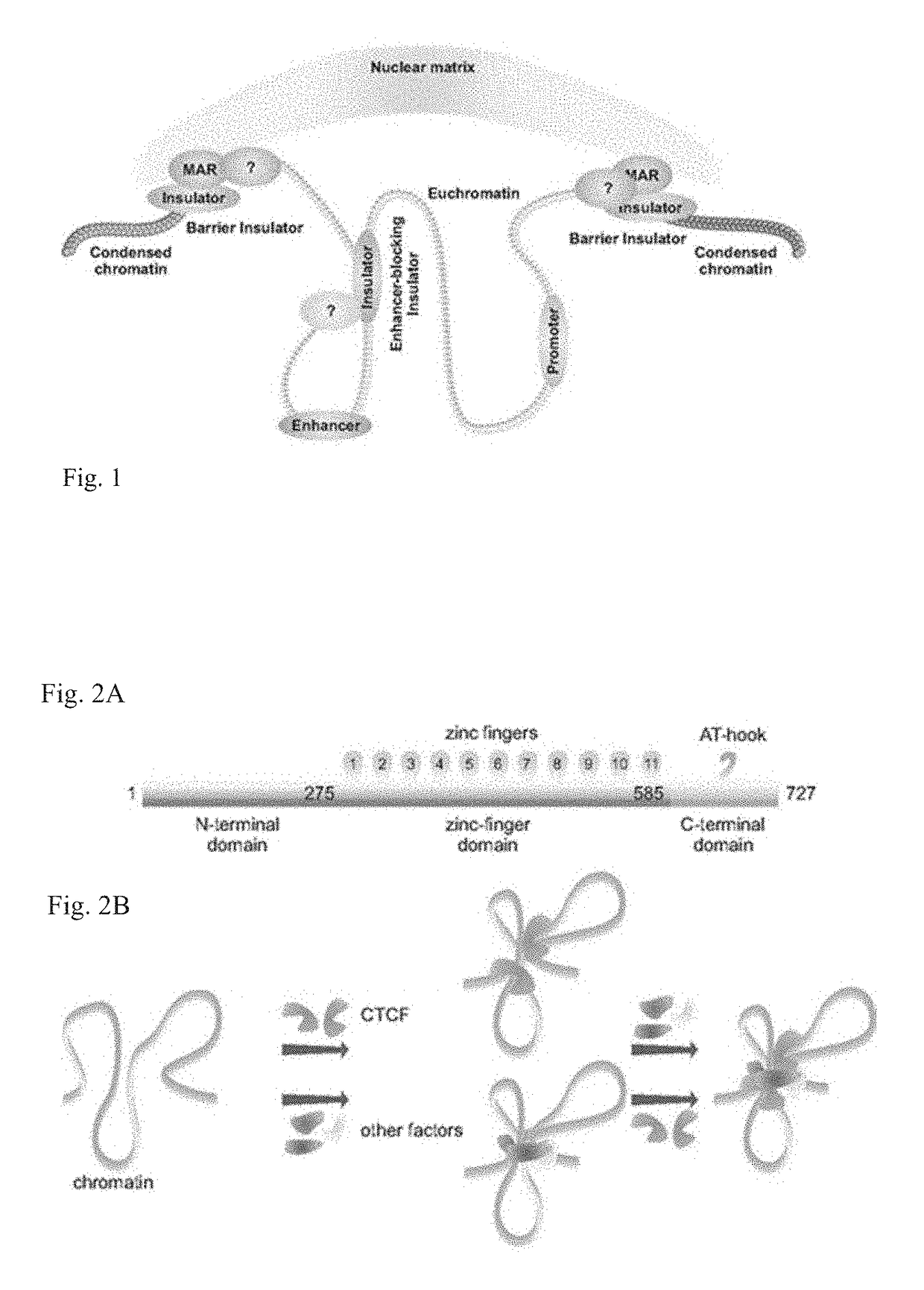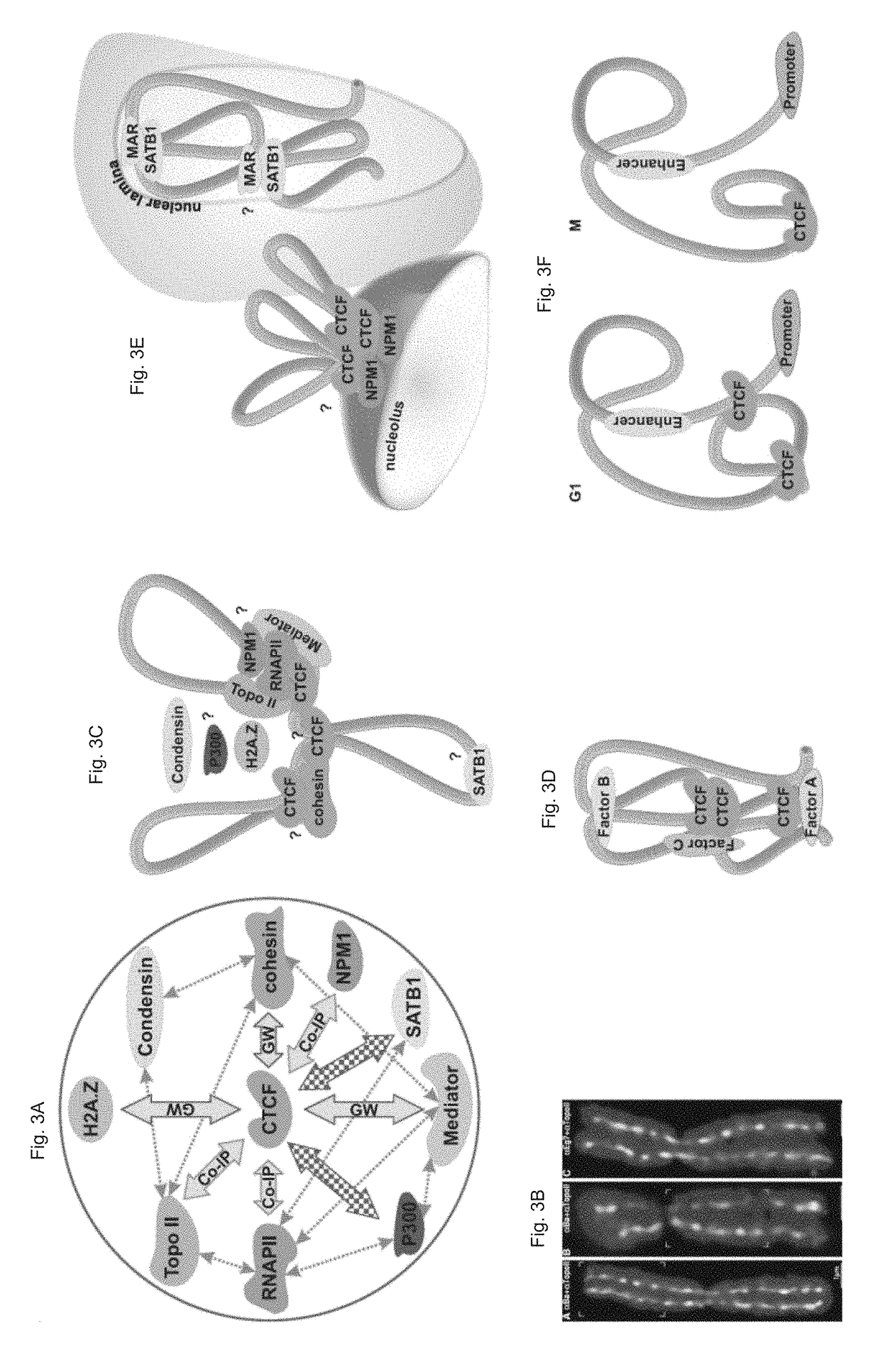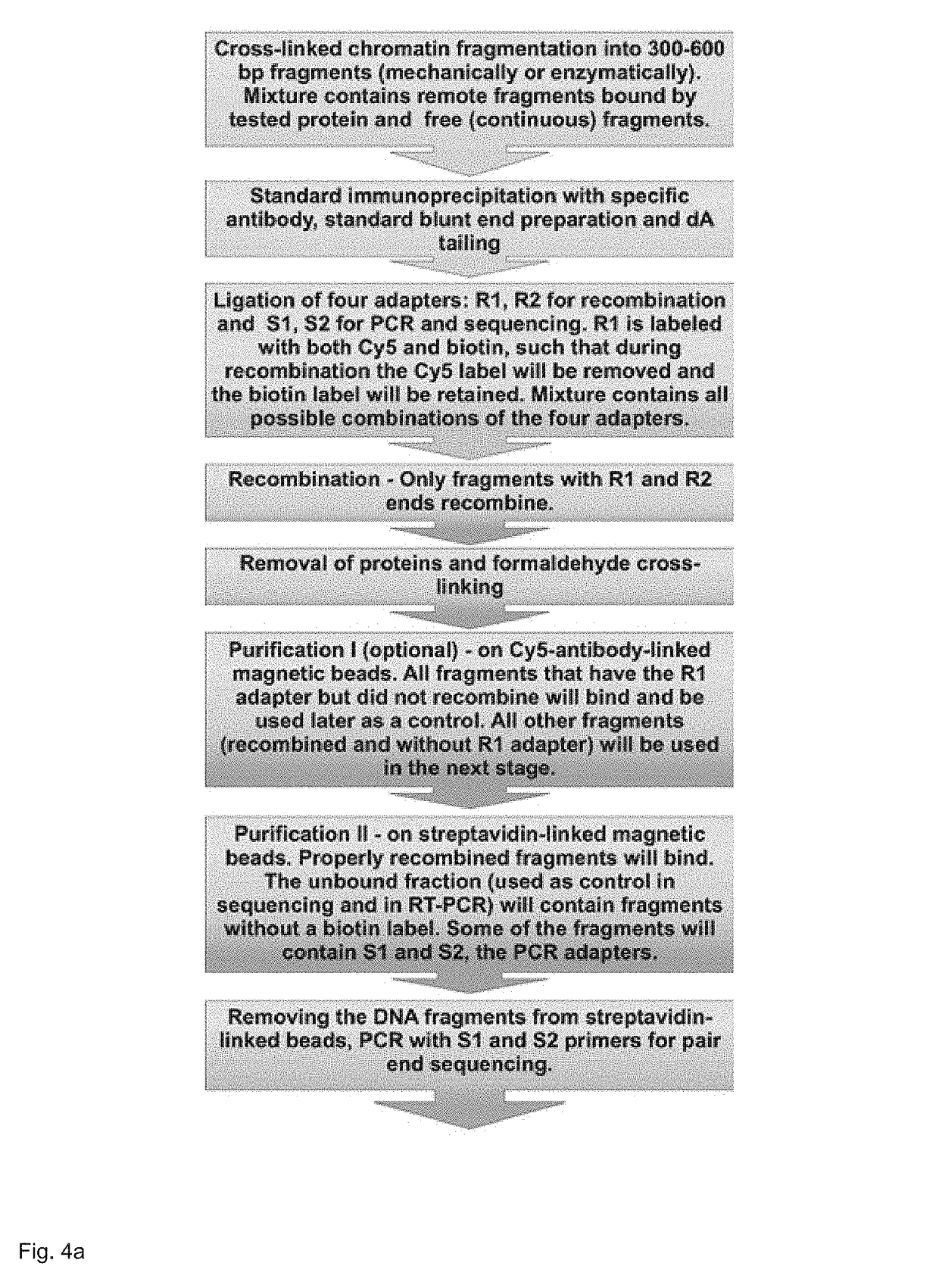Mapping cell identity determinants in chromatin
a cell identity and chromatin technology, applied in the field of mapping cell identity determinants in chromatin, can solve the problems of inability to achieve similar sensitivity, resolution and specificity, and no current technology that can achieve similar sensitivity, resolution and specificity, and achieves strong and relatively inexpensive biotin-mediated interactions, easy quantification of outcomes, and increased sensitivity of assays
- Summary
- Abstract
- Description
- Claims
- Application Information
AI Technical Summary
Benefits of technology
Problems solved by technology
Method used
Image
Examples
examples
[0074]The disclosed technology can resolve how specificity in chromatin contacts is achieved both in transcriptional control and in mitotic organization. A particular application is how enhancers, distal to the start of transcription, can influence it by acting in cis, and how insulators can be enhancer-blocking or can form the barrier to heterochromatin spread (barrier insulators) [FIG. 1].
[0075]The importance of chromatin organization problem was recognized and studied in several cellular contexts for selected loci, e.g. MYC [3], H19 / insulin-like growth factor (Igf2) [4], β-globin [5], human major histocompatibility complex class II (MHC-II) [6], where researchers tried to determine chromatin contacts' characteristics and the rules behind their specificity (reviewed in [7-8]).
[0076]CCCTC-binding factor (CTCF)—a “master weaver of chromatin structure” [7]—binds in a sequence-dependent manner at tens of thousands of sites in the human genome [9-12] and has a confirmed role in transcr...
PUM
| Property | Measurement | Unit |
|---|---|---|
| s diameter | aaaaa | aaaaa |
| size | aaaaa | aaaaa |
| affinity | aaaaa | aaaaa |
Abstract
Description
Claims
Application Information
 Login to View More
Login to View More - R&D
- Intellectual Property
- Life Sciences
- Materials
- Tech Scout
- Unparalleled Data Quality
- Higher Quality Content
- 60% Fewer Hallucinations
Browse by: Latest US Patents, China's latest patents, Technical Efficacy Thesaurus, Application Domain, Technology Topic, Popular Technical Reports.
© 2025 PatSnap. All rights reserved.Legal|Privacy policy|Modern Slavery Act Transparency Statement|Sitemap|About US| Contact US: help@patsnap.com



